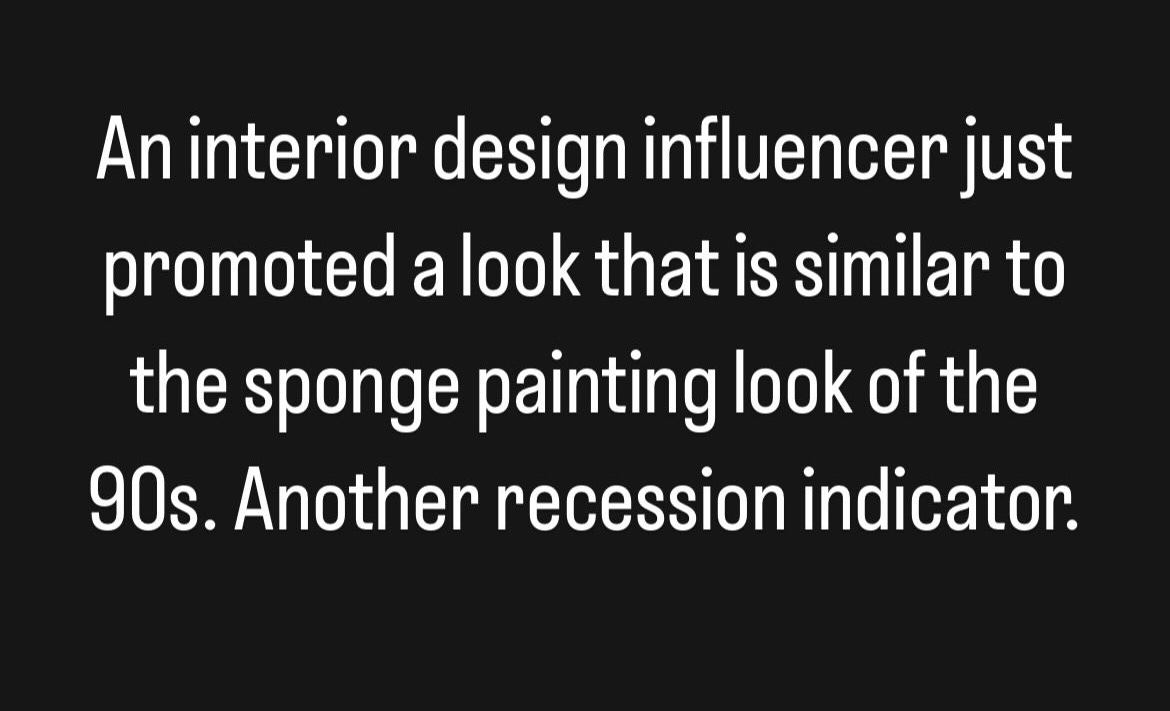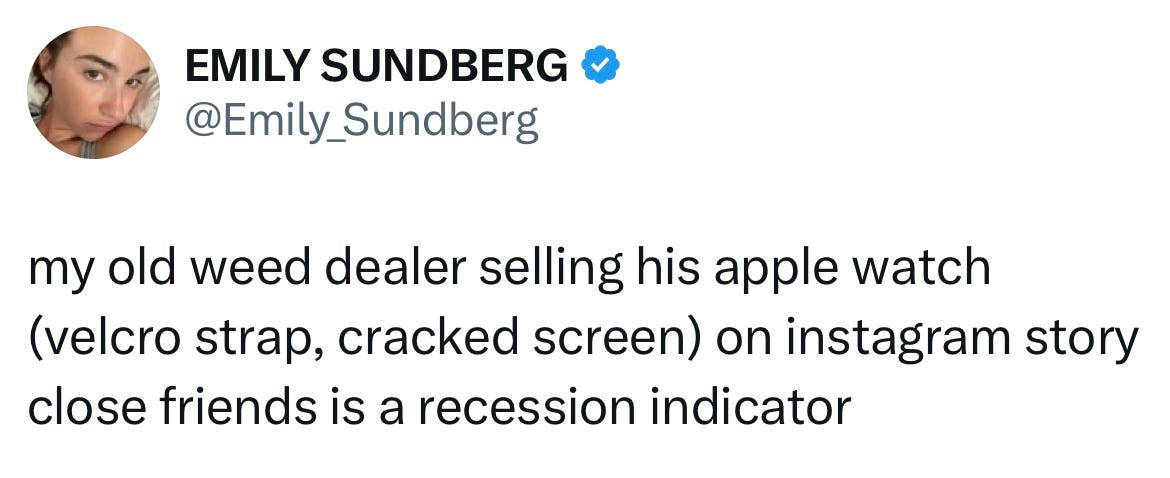Everything is a 'Recession Indicator' Now
There are recession indicators everywhere for those with eyes to see.
Casual blazers. The return of pop punk. Kreayshawn. Logomania. Celine Phantom bags. Celebrities in commercials. Infinite Jest. Although these things appear to have little in common, they’ve all been dubbed ‘recession indicators’ on social media. While we are not technically in a recession—in May, J.P. Morgan Research reduced the probability of a 2025 U.S. and global recession from 60% to 40%— you wouldn’t know it by the state of the internet. Every time I open my phone, a flood of posts designating new cultural objects or phenomena recession indicators—sometimes joking, sometimes not. Just about anything can be a “recession indicator,” but they typically fall into one of two categories: a pop culture artefact from 15-20 years ago makes a mysterious return (e.g. The Devil Wears Prada 2), or someone engages in strange/out-of-character/cringe behaviour in order to save money.
Classically, a recession indicator is something a little less colourful. For example the Sahm Recession Indicator, developed by policy analyst Claudia Sahm, denotes a recession is around the corner “when the three-month moving average of the national unemployment rate (U3) rises by 0.50 percentage points or more relative to the minimum of the three-month averages from the previous 12 months.” Not nearly as fun as people getting their nails done less, or strip club patrons leaving stingier tips.
Economists tend to call a recession after two or more quarters of negative GDP growth. The C.D. Howe Institute defines one as a "pronounced, persistent, and pervasive decline in aggregate economic activity.” Apparently, the conditions the US are experiencing at the moment constitute “stagflation-lite—growth running below trend coupled with inflation that is uncomfortably heading higher into year-end,” according to RBC In Canada, the forecast is worse thanks to tariff-related uncertainty, with both CIBC and TD banks predicting GDP shrinkage for the final two quarter of 2025. But for all the reassurances that we’re not headed into a recession, there’s little relief for those feeling the pinch.
Recession indicator posts first appeared in 2023, remained steady throughout 2024, and reached a fever pitch halfway through 2025. Even the ones that aren’t obviously jokes are still more vibes than substance. Rather, they’re a desperate attempt to affirm our own perception and experience of the world as it slips further and further away from anything that could be deemed familiar. Widespread economic anxiety has become a steady feature of life. At the moment, almost everyone I know—I’m not friends with any billionaires—is experiencing some form of precarity, whether that’s long-term unemployment, a sharp decline in freelance gigs, or feeling stuck in a job they hate because of the dire state of the job market. People who can’t afford a $1000 emergency expense see recession indicators everywhere, the same way a Catholic sees Jesus in a piece of burnt toast.
What all this talk of recession indicators suggests is that, rather that quibbling about
Keep reading with a 7-day free trial
Subscribe to Freak Palace to keep reading this post and get 7 days of free access to the full post archives.






